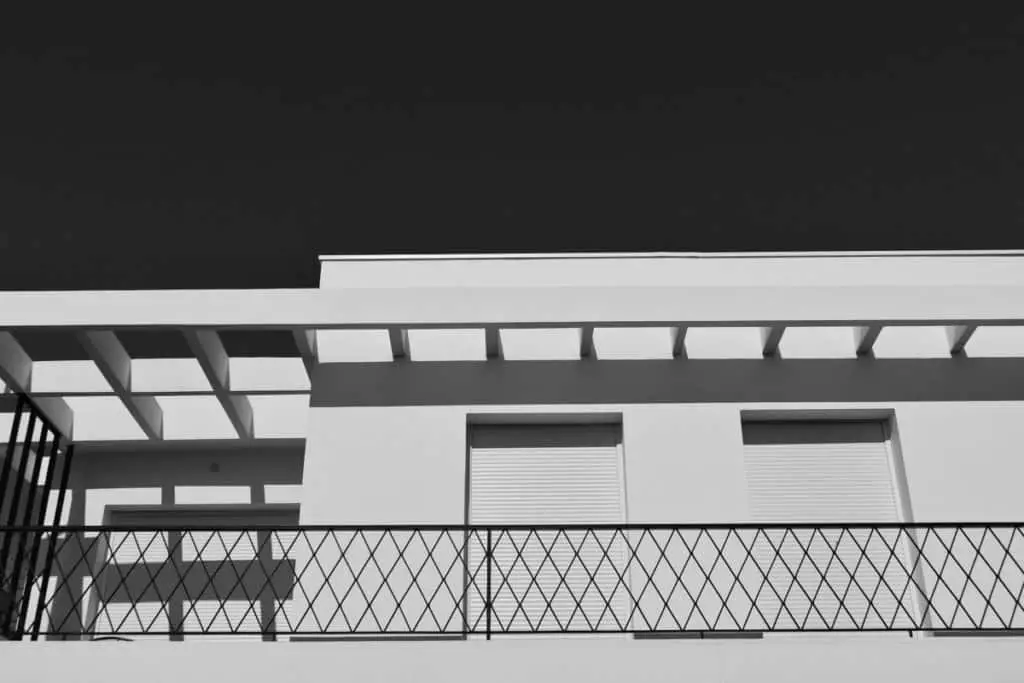
Are you in the market for a flat roof replacement? Did you know that there are at least 8 different types of flat roof materials to choose from? With so many options available its important to do your research and find out which one is best for you!
Here are the 8 different types of flat roof materials:
- Built-Up Roof (BUR)
- EPDM Rubber
- Modified Bitumen
- Roof Garden
- Spray-On-Roofs
- TPO
- PVC
- FleeceBack
What is Built-Up Flat Roof (BUR)?
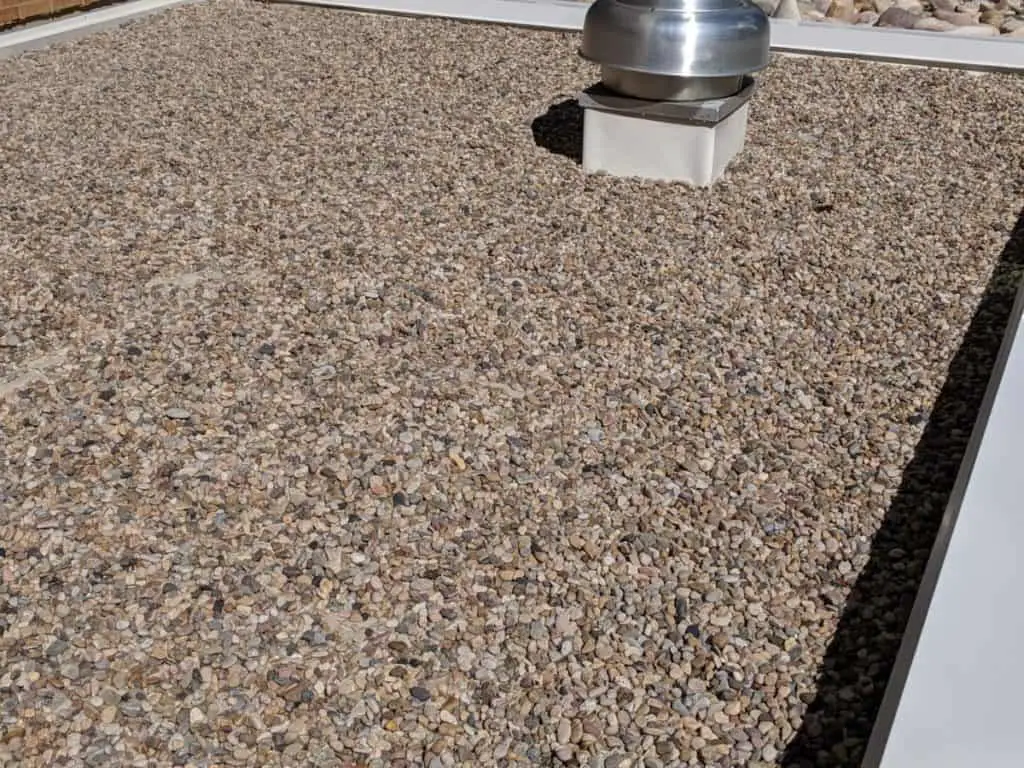
A Built-Up Roof system is composed of layers of various fabric materials and asphalt. The layers work together to make your roof water tight. The last layer of the roof is topped off with gravel.
The layers of fabric and bitumen keep water out and protect the base of the roof. While the gravel protects the layers below it from UV damage, impact damage, foot traffic, and other potential damaging sources.
Fun Fact: Another name for this type of roof material is the “tar and gravel roof”.
This roof system works much like an asphalt shingle because its composed of layers and topped with gravel. You can think of this roof system as converting your entire roof into one giant shingle.
Generally, the more layers you add the longer the roof will last. I good rule of thumb to follow is that you will get about 5 years for every layer used. So a 4 layered roof would last about 20 years.
Learn more about Built-Up Roofs by checking out this other article the Pros & Cons of Built-Up Roofs
What is EPDM Rubber Roof material?
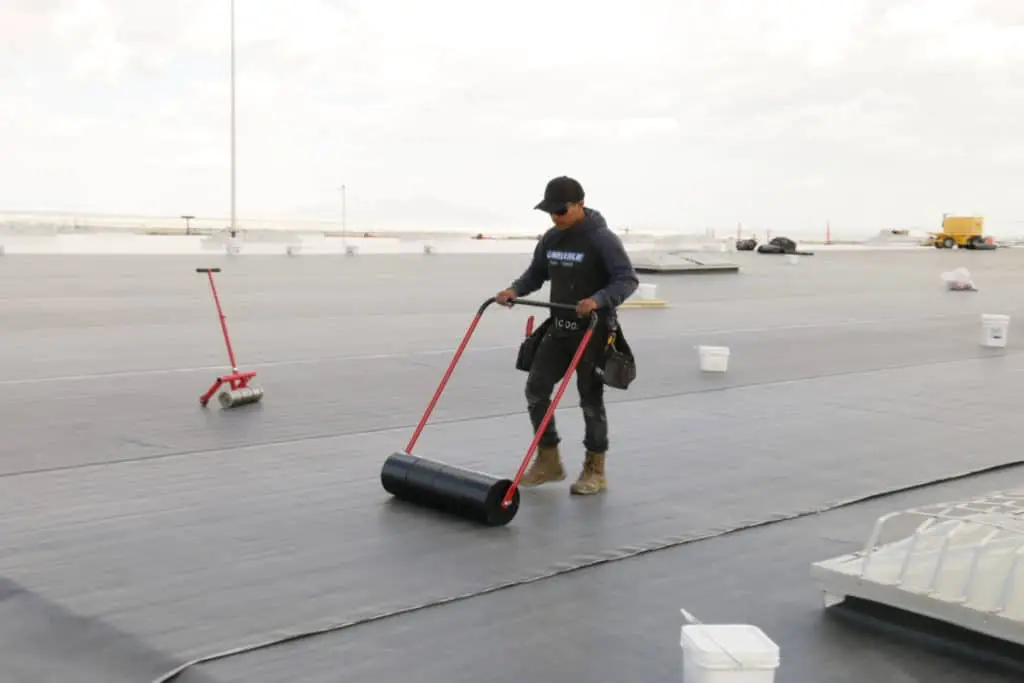
EPDM stands for Ethylene Propylene Diene Terpolymer. The Terpolymer is composed of three different Monomers, hence the “M” in EPDM.
This roofing material is a single ply flat roof material that can be installed in several different ways.
You may be surprised to find out that most of you interact with EPDM rubber everyday without realize it. EPDM rubber is the same type of rubber that used to seal up car doors, trunks, and windows.
The water proofing qualities that make it great for your car also make it great for a roof system.
EPDM started to become popular during the 70’s after Built-Up-Roof Systems. This makes it slightly newer than BUR systems but not the most modern flat roof material. Nevertheless it still gets used today.
To find out more about why this roof system is still used today you can check out this other article I wrote about the Pros & Cons of EPDM Roofing.
What is Modified Bitumen flat roof material?
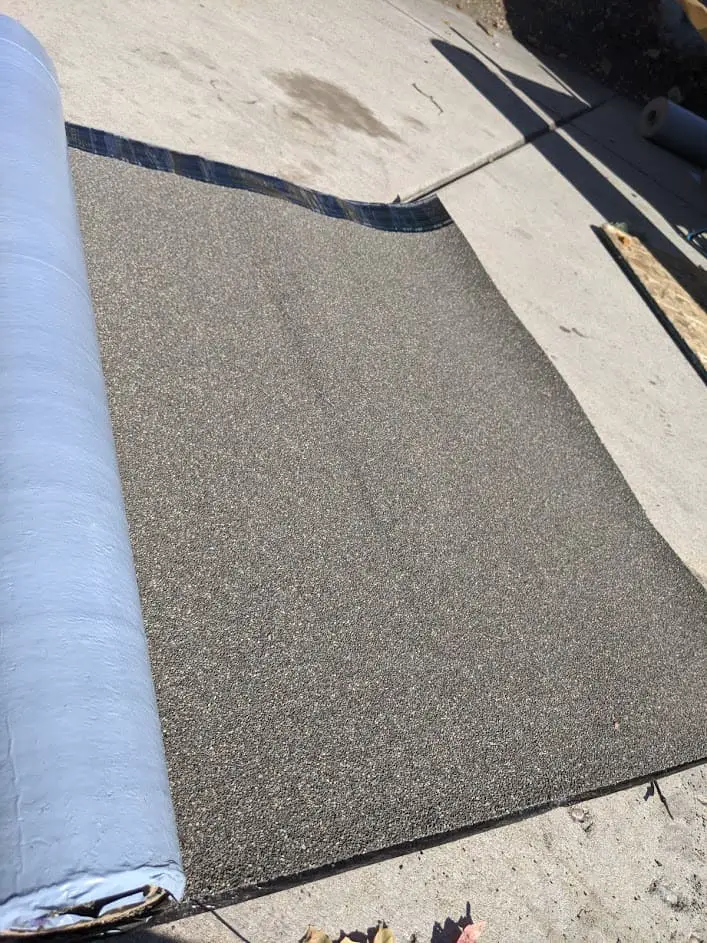
Cap (SBS) 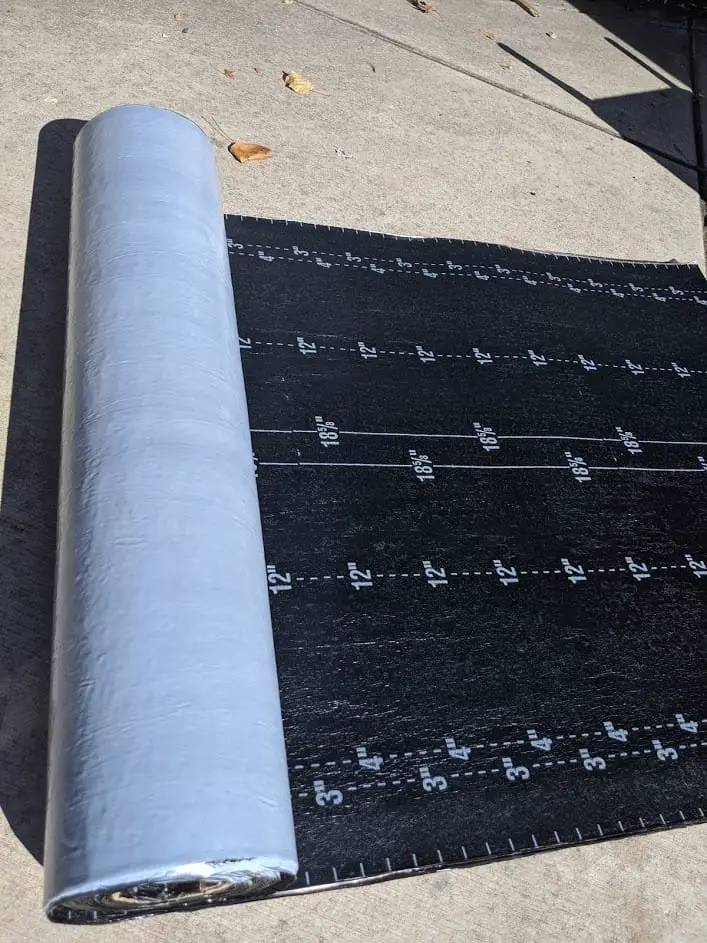
Base (SBS)
Modified Bitumen is when a polymer is added to Bitumen or asphalt to change the properties of it. The two types of polymers used are Styrene-Butadiene- Styrene (SBS) and Atactic Polypropylene (APP).
SBS modified Bitumen is more of a “rubber ashpalt” because it is more flexible and elastic than the APP. It also turns into a gooey paste when melted.
APP modified Bitumen is more of a “plastic ashpalt” because it is firm and more brittle than SBS, but melts into a free-flowing liquid like hot wax.
Modified Bitumen roof system contains two layers the base and cap. The base layer provides waterproofing and a surface for the cap sheet to adhere to.
The base is made out of a sheet of either fiberglass, non-woven polyester, or a combination of the two that is covered in the modified bitumen.
The top layer or the cap is made in a similar manner to the base layer except for the cap is coated in a layer of granules. The same type of granules used on shingles.
There are 3 different ways the cap layer can be adhered to the top of your flat roof.
- Self-adhesive: This means that each layer has a sticky backside that is covered in plastic. Upon removal of the plastic the layers stick down and seal when the sun hits it.
- Heat adhesive/welded: This usually involves a propane torch to melt the bitumen and seal it together. SBS and APP act differently when heated.
- Cold adhesive: Bitumen that is liquid at room temperature is used. This reduces potential fire risk and toxic fumes that can come from the heat adhesive.
To learn more about Modified Bitumen, you can click this link to view the Pros and Con’s list of using Modified Bitumen as a roofing material.
What is a Roof Garden?
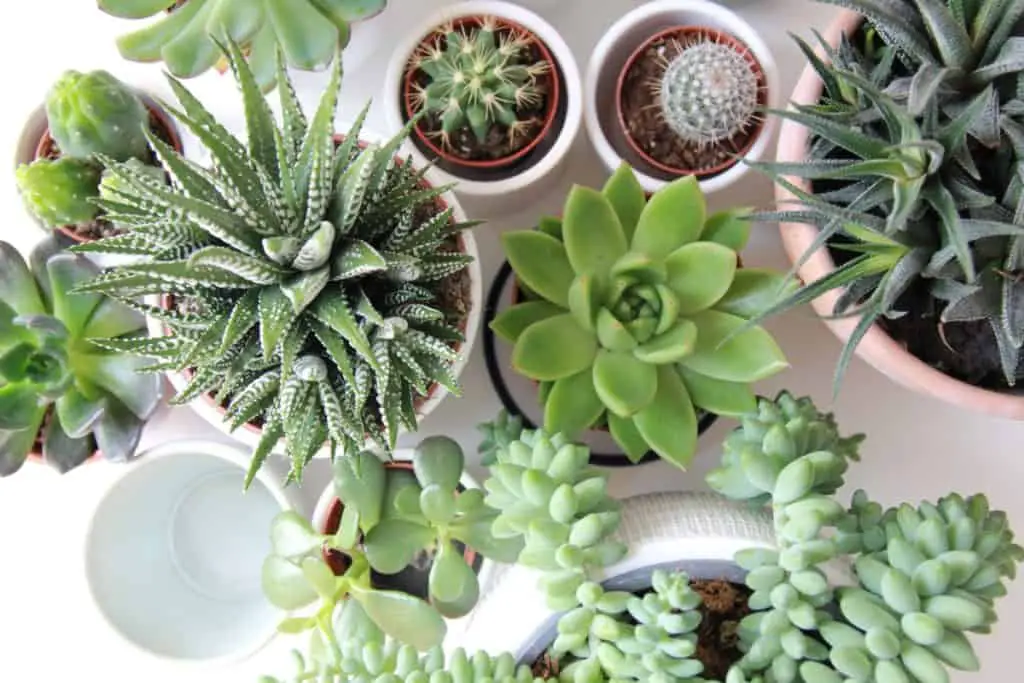
A roof garden is an Eco-friendly alternative flat roof option. It allows you to get the best of both a garden and reliable flat roof. You can also check out my other article which goes over all the advantages and disadvantages that come with a roof garden.
There are two types of roof gardens Extensive and Intensive. Extensive roof gardens are what you probably think of first when I say roof garden. Extensive roof gardens are made up of smaller plants that don’t require a lot of water. One example of this type of plant is succulents. These types of flat roofs are typically installed on residential homes because they are light weight.
Intensive roof gardens are just the opposite. They are made up of trees, bushes, and other large plants. They also may include fountains and a watering system. They are most often used on commercial buildings because they can support heavy weight.
There are at least 7 layers of materials that go into setting up a roof garden. You can learn more about these different layers by clicking this link Here.
What is a Spray-On-Roof?
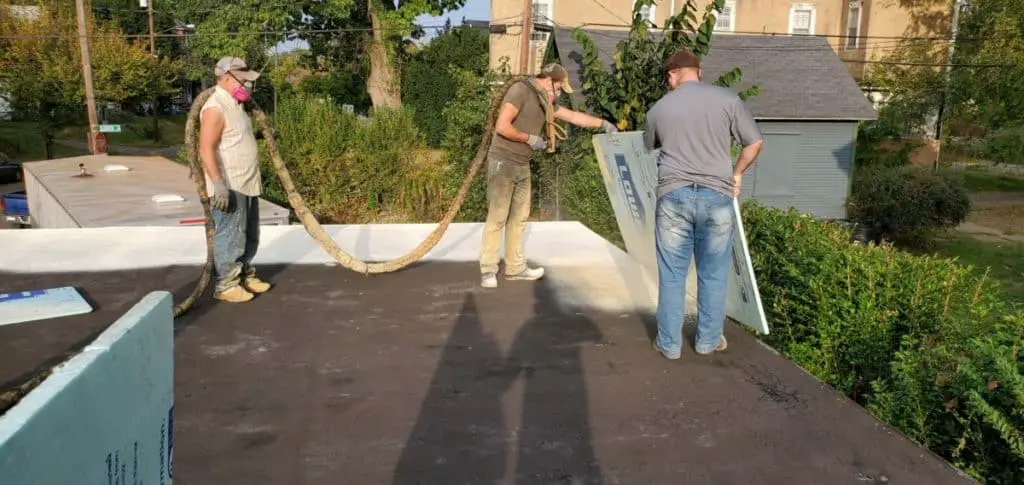
A spray-on-roof is a special type of flat roof material that is installed by “spraying it on the roof”. There are many benefits to a spray on roof like saving time, convince, and durability. To learn how durable this type of roof system really is, click here.
This flat roof material is used on both commercial and residential roofs.
Now, you might be thinking, if a spray on roof is so great why doesn’t everyone use it? That’s a great questions which I have answered in this article the 17 Pros & Cons of Spray on Roof Systems.
What is TPO roof material?
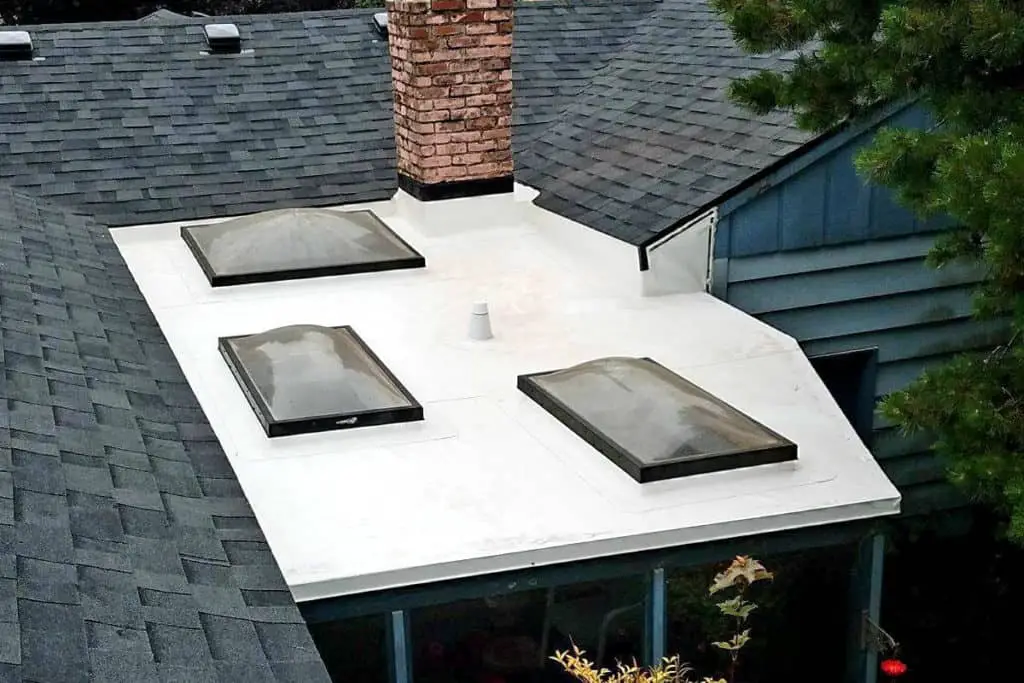
TPO is a flat roof material that is made up of Thermoplastic Polyolefin layers. Each layer is made from Ethylene propylene rubber, and talc carbon filler or fiberglass.
TPO has only been around for the past 40 years making it one of the newest innovations for flat roof materials. It has unique properties that make it comparable to PVC but still different. One worth mentioning is how it reacts when set on fire. You can learn more about these properties by checking out this article.
For a more in-depth explanation about TPO flat roof material, you can check out this article here.
What is PVC roof material?
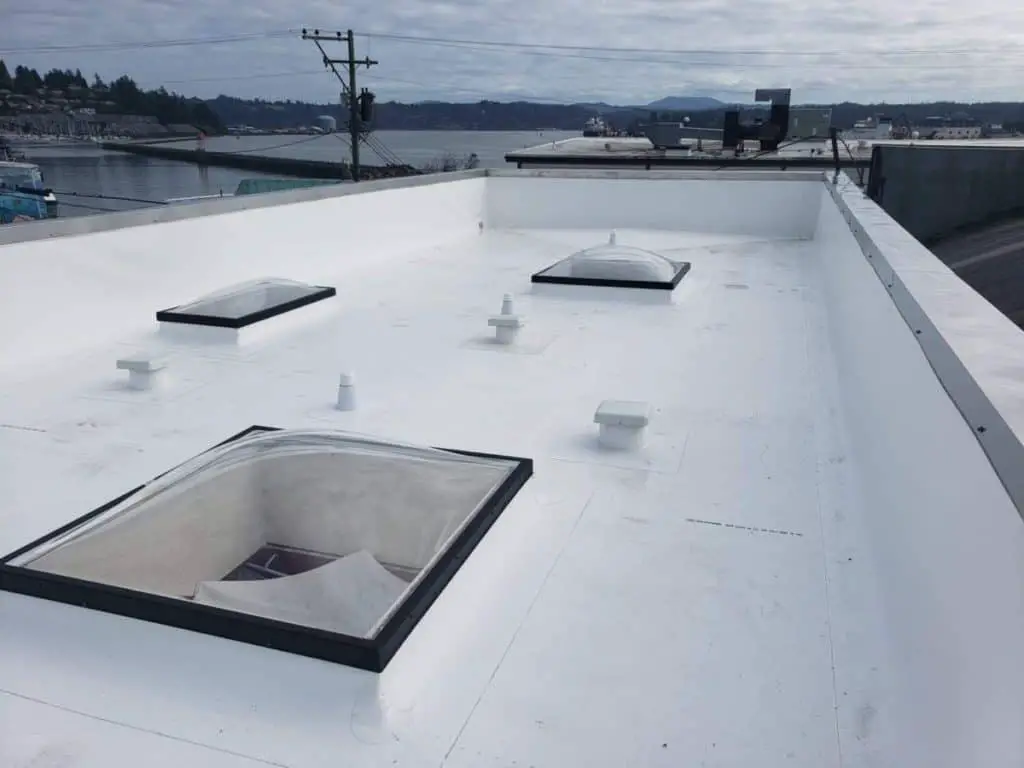
PVC flat roof material is made up of ethylene and chlorine which are derived from processed petroleum or natural gas and salt respectively.
PVC stands for Polyvinyl Chloride, as previously mentioned it is similar to TPO but has its own set of advantages and disadvantages like how it performs in cold temperatures. You can read more about this by reading this article here.
You can also check out my other article on it which talks about all the different ways this flat roof material can be installed.
What is FleeceBack flat roof material ?
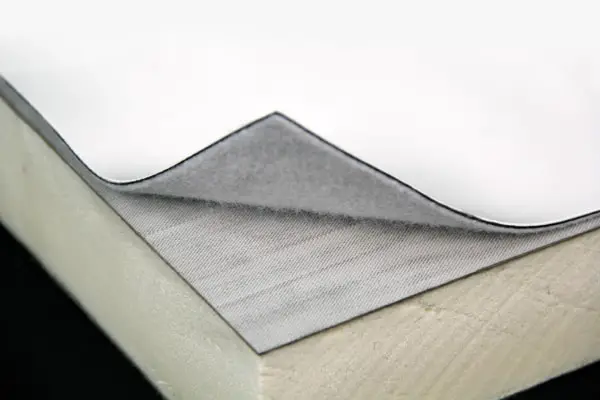
A fleece-backed roof material is when a special polyester material is added to the back of other flat roof materials like TPO, EPDM, or PVC to make it more durable. How this material is installed also affects how durable this material is. You can learn more about how this flat roof material is installed by clicking this link.
To learn more about the advantages and disadvantages of this roof material and what it means to “over-spray” check out this article.
Most Affordable Flat Roof Material?
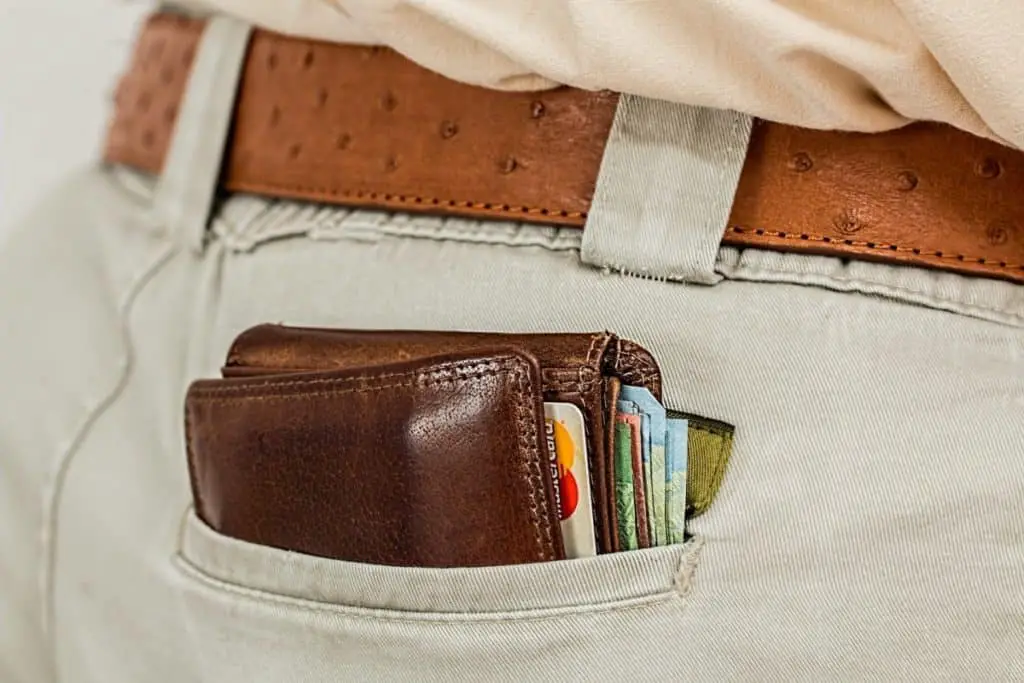
The most affordable roofing material depends on several things like labor costs, material costs, and life expectancy. The cost to install the roof material varies greatly on so many factors. How long it takes to install the roof, how complex your roof is, and the rates of your local roofing company all play a role in the labor cost associated with installation.
I have included a chart that shows an estimated cost for the materials per square. This is the roofers square which refers to 100 square feet.
It is also important to consider how long the roof will last. Sometimes its better to choose a roof material that is more expensive up front but will last longer down the road as opposed to one that is cheaper but does not last as long. Essentially, its good to consider what is the best bang for the buck for your situation.
| Flat Roof Material | Cost per Square |
|---|---|
| Built-Up Roof (BUR) | $165 – $250 |
| EPDM Rubber | $75 – $450 |
| Modified Bitumen | $165 – $250 |
| Roof Garden | $100 – $400 |
| Spray-On-Roofs | $400 – $700 |
| TPO | $150 – $500 |
| PVC | $75 – $250 |
| FleeceBack | $93 – $133 |
| Material | Lifespan |
|---|---|
| Built-Up Roof (BUR) | 5 years per layer |
| EPDM Rubber | 20 – 30 years |
| Modified Bitumen | 10 – 20 years |
| Roof Garden | 30 – 50+ years |
| Spray-On-Roofs | 50+ years (silicone re-coat every 10 – 20 years) |
| TPO | 20 – 30 years |
| PVC | 20 – 30 years |
| FleeceBack | 20 – 50+ years |
